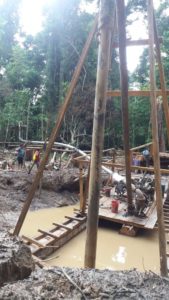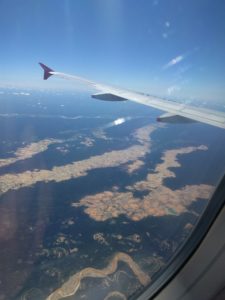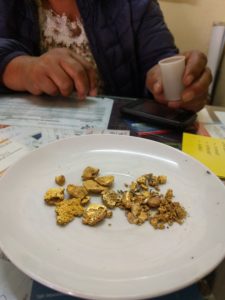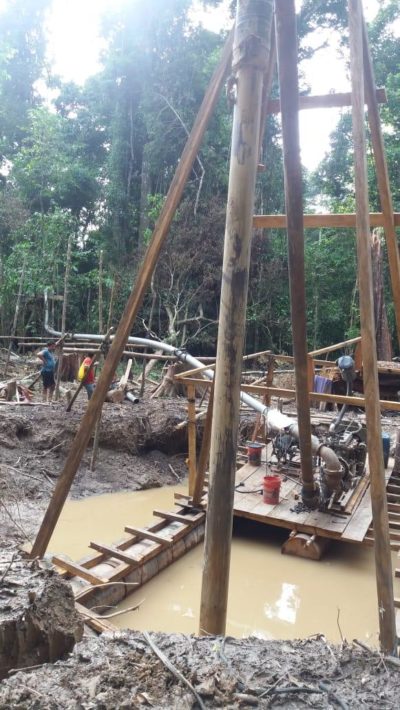We all have a role to play in indigenous exposure to coronavirus, by Amy Penfield, University of Bristol
The first confirmed cases of COVID-19 in the UK were reported on January 29th 2020. In the early days it spread rapidly around Europe, but it was a little while before it reached South America. Not long after its arrival, stories started to appear of indigenous cases. The first death was of a Yanomami man at the start of April 2020. News reports suggested that this youth contracted COVID when attending school outside of Yanomami territory, although the location was not stated.
More and more accounts emerged of indigenous exposure to the virus, with cases increasing by the day. Almost immediately, reports began to link indigenous COVID-19 exposure to incursions from gold miners within their territory. Even the story of the Yanomami youth, despite suggestions that he contracted COVID as a result of migration to other areas for education, were subtly placed alongside stories of wildcat gold miners in the area where his parents live (to which he later retuned). This reporting suggests, rather than affirms, that interaction with miners was the route of transmission. But what really is the relationship between mining and indigenous peoples? And what are the wider implications in terms of global economies and, in turn, even our role in their exposure to COVID-19?
Who are these miners?
The frequent reference to mining piqued my interest because my research in lowland south America has focused on interactions between indigenous populations and miners in both Venezuela and Peru, in the latter context from the perspective of the miners themselves. Indigenous peoples in lowland South America certainly can be placed at risk of contracting diseases from miners (and other non-indigenous illegal invaders) because often encounters between the two are intimate ones.

What my research with indigenous peoples in Venezuela has shown is that they interact with miners face-to-face (i.e. close enough to catch the virus) in part because they visit and negotiate with miners on a regular basis. Indigenous peoples have been known to ask miners for goods and food, and sometimes they engage in ongoing trade relations with them, such as supply them with bushmeat in exchange for much valued manufactured items.
Although these kinds of encounters are rarely described in detail, they do take place and indicate that miners can and do expose indigenous peoples to illnesses. But indigenous peoples also frequently travel to urban centres (perhaps more so than is presented in the media), and are visited by state personnel, doctors, and missionaries on a regular basis. In this sense, it can be difficult to determine the route of transmission, particularly in the early days before travel restrictions and lockdown measures were put in place.
Clearly the risks that miners pose to indigenous peoples are very real, and always have been. Indigenous peoples do not choose to have illegal miners (or indeed any illegal activity) in their territory and if they engage with miners or in mining activities, this is merely an inevitable consequence of incursions and the associated activities into which they become embroiled for numerous economic and cultural reasons. I am certainly not condoning illegal mining in any way and I acknowledge that it takes different forms in different regions of Amazonia. But I am also compelled to tell the other side of the story, perhaps because the story of miners is so infrequently offered or distilled into a ‘miner versus indigenous peoples’ trope. Prospectors are more often than not portrayed as immoral adversaries, and their diversity eliminated. But I also want to tell the other side of the story because it revels our own role – or at least the economies of the powerful global north – in the way that these clashes and crises play out in the global south.
The noventeros
My research with gold miners was conducted in Peru, so has its own particular historical, ethnic and political trajectory. Illegal gold mining in Madre de Dios has created one of the largest scars in the Amazonian landscape, with approximately 95,750 hectares of land deforested over the last 34 years. In this context, even creating a distinction between indigenous populations and miners is problematic because these miners are often Andean indigenous peoples. Among the 100 or so miners that I interviewed – predominantly Quichua speaking highlanders – all told stories of extreme poverty and lack of opportunities that led them to venture to the lowlands to seek their fortune.

Mining was a harsh and exhausting pursuit. Arriving in the mining territory after several days of treacherous travel, prospectors were more often than not exploited by ‘bosses’ of work crews and entrapped into hard labour in isolated locales from where they could not escape. If they attempted to flee – as most reported – they would have been killed. Some never made it home. Most of these more severe cases of indentured labour took place in the 1980s when the first gold rush of Peru began. The miners of this era were called the ‘90-ers’ (‘noventeros’) because they had to complete 90 days of work before being escorted back to civilisation with a mere gesture of payment.
The 90-ers were the first generation of courageous migrants – starting in the 1980s – who dared venture into the threatening unknown lands of the lowlands in order to provide for themselves and their families. The decade of its beginnings, that marked the first influx of miners, was no accident. The 1980s was a time of economic liberalisation and neoliberal structural adjustment programmes that plunged Peru into debt, resulting in declining living conditions and increased disparity between rich and poor.
Many of the miners that I interviewed remember this as the time in which they started to travel down to the forest, and they have done so ever since. Gold made some people rich beyond their wildest dreams, but most only made a little extra money to buy a few items sorely needed. The same highland population continue to intermittently prospect even to this day because mining is seen to be an avenue of opportunity when their main source of income – often sales of crops at market stalls – become disrupted or limited.
The global connection
So, miners travelled to the lowlands to provide opportunities in times of extreme poverty. But this was not the only reason the gold rush has continued to surge since this time; it is due to the global demand for gold. Since the 1980s, the price of gold has increased by 384%. Gold is used for jewellery, investment, central banks and technology, but its use in investments is what creates (and causes spikes in) demand because it will always be a commodity sought to buffer political and economic instability. In other words, when economies fail, the price of gold soars. This is particularly the case when economies of the global north take the risks in market (the worst case during the 2008 economic crisis) which inevitably causes gold rushes in the global south.
During fieldwork in Venezuela in 2008, I noticed that mining activity swelled when gold prices were high, and eased off when gold prices were low. Similarly, in Peru, many miners and traders recall a moment ‘about 10 years ago’ (fieldwork was conducted in 2018) in which the price of gold shot up. My main research collaborator, a gold trader based in Cusco, asserted that ‘gold is something that has an international price’.

Global virus and gold fever
Just as neoliberal policies launched an era of acute exploitation, the coronavirus impact on the Amazon and its people has a similar effect. This global health crisis has brought with it an economic crisis as a result of a global escalation in unemployment, falling tax revenues, reduced spending, and failing businesses.
While oil prices are plummeting (at one point entering negative figures for the first time in history) due to reduced economic activities, gold prices are skyrocketing. People are investing more in gold because it is seen as a sound financial investment as a natural commodity (unchanged by human action or whims) and a safe store of value when price pressures rise. The price of gold has increased by 27% this year alone, rising over $1,800 per ounce for the first time in 9 years.
At the same time, job and food security are causing more vulnerability amongst those who normally work in the informal economy – the sector from which miners hail. The International Labour Organisation (ILO) has stated that informal workers cannot rely on income replacement or savings, which means that being forced to stay at home in lockdown has drastic consequences. Not only do they lose their livelihoods, but they risk going hungry; some see it as a matter of “contagion or starvation”. In situations like this, people are more likely to fall back on illegal activities that are not being monitored or regulated and that guarantee a good income in spite of the economic downturn.
Coupled with the high price of gold, it would not be difficult to see why miners would flood to the hinterlands of Amazonia in search of riches. It is true that in so doing they put some indigenous communities at risk – particularly given that their activities are unlikely to adhere to distancing measures expected by other citizens – but exploring their hardships might help us better understand their motivations. More importantly, we might see with greater clarity the role played by the world’s most powerful economies predominantly situated in the global north.
In a pandemic, the state of the economy is determined by policy responses that focus on virus containment, public-health infrastructure and the science of COVID-19 mitigation. Sadly, many of the most powerful countries of world have fail in this regard: in their clarity and consistency of COVID-19 decision-making. Coronavirus strategies, such as when to implement lockdown and when to ease it, might deepen economic crises, which then lead to higher gold prices, which in turn lead to an intensification in mining, and ultimately the risk to isolated indigenous peoples. Our own decisions also have global reverberations, such as who we vote for and what jewellery we buy. The fate of indigenous Amazonians is a fragile one indeed, but is intertwined with global decisions and processes, and thus also to the everyday lives of every one of us.

